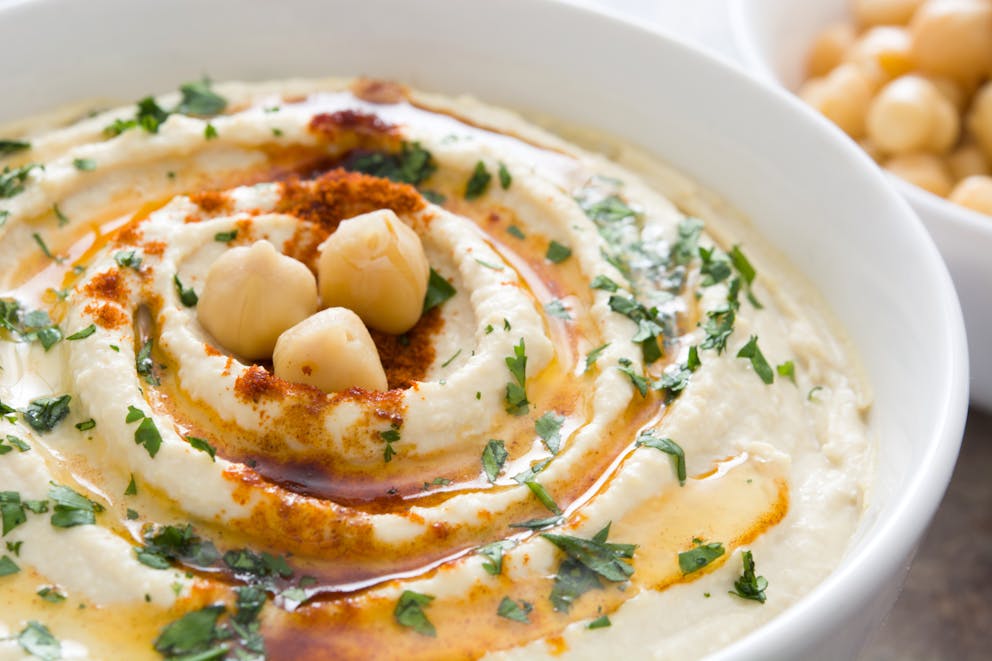The Worst and Best Carb on Keto
The ketogenic diet has gained immense popularity for its potential to promote rapid weight loss and improve metabolic health. However, navigating the world of carbohydrates on keto can be tricky.
While most people know to avoid obvious high-carb foods like bread and pasta, some seemingly healthy options, like certain fruits and sweetened yogurt, can derail your efforts to reach ketosis.
Understanding the worst carbs on keto, such as starchy vegetables and sugary breakfast cereals, is crucial for anyone looking to maximize the benefits of this low-carb, high-fat diet.
Let’s delve into exactly how many carbs you can eat on keto and which high-carb foods to avoid.
The Science Behind Carbs and Ketosis
Before we identify the worst carbs on keto, it's important to understand why carbohydrates are so problematic for ketosis. When you eat carbs, your body breaks them down into glucose, which causes your blood sugar to rise.
In response, your pancreas releases insulin to help cells absorb this glucose for energy. The ketogenic diet aims to keep insulin levels low by severely restricting carbohydrate intake.
This forces your body to burn fat for fuel instead of glucose, leading to the production of ketones - hence the term "ketosis."
Most people need to limit their total daily carb intake to 20-50 grams net carbs per day to maintain ketosis. This leaves very little room for error when it comes to carbohydrate consumption.
Fructose: The Worst Carb on Keto
When it comes to the worst carbs on keto, fructose takes the top spot. This simple sugar is found naturally in fruits fruits and added to many processed foods in the form of high-fructose corn syrup.
Unlike glucose, which can be used by cells throughout your body, fructose is processed almost entirely by your liver. This unique metabolism can lead to several problems:
Increased fat production in the liver
Increased uric acid production
While small amounts of fructose from whole fruits may be okay for some people on a less strict low-carb diet, those aiming for deep ketosis should avoid it entirely.
Hidden Sources of Fructose
Fructose isn't just found in obvious sources like fruit juice and soft drinks. It's often hidden in foods you might not expect, which is why you’ll want to pay attention to the grams net carbs unsweetened:
Agave nectar (up to 90% fructose)
Honey (about 40% fructose)
Dried fruits
Energy bars
Some condiments and sauces
Always check labels carefully, as manufacturers often use fructose-based sweeteners to make "low-fat" products taste better. For example, plain greek yogurt is a great low-carb option, but sweetened yogurt is higher in carbs unsweetened.
Other Carbs to Avoid on Keto
While fructose may be the worst offender, there are several other carbohydrates you'll need to eliminate or severely restrict to maintain ketosis. Many of these are foods people eat on a regular basis, which makes it even more important to be aware:
Grains and Starches
All grains, including whole grains, are too high in carbs for a ketogenic diet. This includes:
Wheat (bread, pasta, cereals)
Rice
Oats
Corn and corn-based products
Quinoa
Even small servings of these foods can kick you out of ketosis. A single slice of bread can contain 15-20 grams of carbs - nearly a full day's allowance for some keto dieters.
That is why limiting carb intake is key to staying in ketosis. Instead of grain-based snack foods, try a hard-boiled eggs as a snack.
Starchy Vegetables
While vegetables are generally encouraged on keto, starchy varieties are off-limits:
Potatoes (including sweet potatoes)
Carrots
Peas
Parsnips
Beets
These vegetables are high in carbs and can rapidly increase blood sugar levels. Instead, focus on low-carb options like leafy greens, broccoli, and cauliflower.
Legumes
Beans and lentils are often touted as health foods, but they're simply too high in carbs for a ketogenic diet:
Black beans
Kidney beans
Chickpeas
Lentils
Peanuts (technically a legume)
A single cup of cooked lentils contains about 40 grams of carbs - far too much for keto. Nuts and seeds, however, are a great alternative and healthy fat.
High-Sugar Fruits
While berries can sometimes fit into a keto diet in small amounts, most fruits are too high in sugar:
Bananas
Apples
Grapes
Mangoes
Pineapple
These fruits can easily push you over your daily carb limit. Stick to small portions of low-carb fruits like raspberries or blackberries if you must have fruit.
Sneaky Carbs That Can Sabotage Your Keto Diet
Some of the worst carbs on keto are those that sneak into your diet unnoticed. These hidden carbs can add up quickly and prevent you from reaching or maintaining ketosis:
Sauces and Condiments
Many store-bought sauces and condiments contain added sugars or starches:
Ketchup
Barbecue sauce
Sweet chili sauce
Some salad dressings
Always check labels carefully and opt for sugar-free versions when possible. Better yet, make your own sauces using keto-friendly ingredients. This way you are able to enjoy a wider variety of flavors.
Processed "Low-Carb" Foods
The market is flooded with products claiming to be "keto-friendly" or "low-carb." However, many of these items contain ingredients that can impact ketosis:
Sugar alcohols
Modified starches
Maltodextrin
While these ingredients may not count as "net carbs" on the label, they can still affect blood sugar and insulin levels in some people. It's best to stick to whole, unprocessed foods whenever possible.
Nuts and Seeds
While nuts and seeds can be part of a healthy keto diet, some varieties are higher in carbs than others:
Stick to lower-carb options like macadamia nuts, pecans, or flaxseeds, and always measure your portions carefully. You can include small amounts of these in moderation. Unsweetened coconut is another great option.

The Impact of Alcohol on Ketosis
While not technically a carbohydrate, alcohol can have a significant impact on your ability to maintain ketosis. Your body prioritizes metabolizing alcohol over other nutrients, which can temporarily halt fat burning. It can also impact your blood sugar.
Some alcoholic beverages also contain substantial amounts of carbs:
Beer (regular and even some "low-carb" options)
Sweet wines
Cocktails with sugary mixers
If you choose to drink while on keto, stick to clear spirits like vodka or gin mixed with sugar-free beverages, such as diet soda.
Remember that alcohol can lower your inhibitions and make you more likely to indulge in high-carb foods, especially carb foods that are considered snack foods, like chips and pretzels.
It's important to be mindful of both your alcohol options and food choices if you choose to drink on keto. You’ll want to keep in mind how alcohol factors into your total carbs for the day.
Strategies for Avoiding the Worst Carbs on Keto
Successfully navigating the world of carbohydrates on a ketogenic diet requires planning and awareness. Here are some strategies:
Read Labels Carefully
Always check the nutrition facts and ingredient lists on packaged foods. Look out for hidden sources of carbs and be wary of marketing claims like "low-carb" or "keto-friendly."
Many times, companies will try to hide sugars and use terms that make it sound healthier.
Plan Your Meals
Meal planning can help you avoid situations where you might be tempted to eat high-carb foods. Prepare keto-friendly snacks and meals in advance so you always have options available.
Focus on Whole Foods
Build your diet around whole, unprocessed foods like:
Meat and poultry
Fish and seafood
Eggs
Low-carb vegetables
Healthy fats (avocados, olive oil, nuts in moderation)
These foods are naturally low in carbs and high in nutrients, making them ideal for a ketogenic diet. Following a keto diet can be a great way to incorporate a wide variety of these foods into your diet.
These foods are also an excellent source of fiber, and including fiber foods in your diet is a great way to improve digestion.
Stay Hydrated
Sometimes thirst can be mistaken for hunger. Drinking plenty of water can help curb cravings and keep you feeling full. Add electrolytes to your water to replace those lost through increased urination on keto.
Be Mindful of Portion Sizes
Even keto-friendly foods can add up if you're not careful with portions. Use a food scale or measuring cups to ensure you're not unknowingly consuming too many carbs.

Carb Traps
Explores those hidden carbs that can derail your ketogenic diet, often found in seemingly healthy foods.
For example, a hummus sandwich might seem like a nutritious choice, but the combination of chickpeas in hummus and the bread can quickly add up in carbs, pushing you out of ketosis.
Other culprits include certain condiments, sauces, and even some vegetables that are higher in carbs than you might expect. Staying vigilant about these hidden sources is crucial for maintaining ketosis and achieving your keto goals.
By being aware of these carb traps, you can make more informed choices and stay on track with your diet.
Conclusion
Understanding and avoiding the worst carbs on keto is crucial for success on this high-fat, low-carb diet. From sneaky sources of fructose to seemingly healthy whole grains, many foods can derail your efforts to reach and maintain ketosis.
By focusing on nutrient-dense, low-carb whole foods and being vigilant about hidden sources of carbohydrates, you can maximize the benefits of the ketogenic diet.
Remember, everyone's carb tolerance is different. What works for one person may not work for another. Listen to your body, monitor your ketone levels, and adjust your diet as needed.
With time and practice, navigating the world of carbohydrates on keto becomes second nature, allowing you to enjoy the many potential benefits of this powerful dietary approach.
Next blog
Using an IUD for Birth ControlTags

Popular
08/21/2024
43.7K views
05/22/2024
39.2K views
11/18/2024
228.3K views
03/18/2024
11/21/2022




